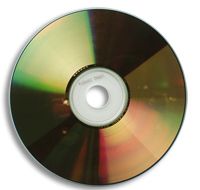In analog technology, a wave is recorded or used in its original form. So, for example, in an analog tape recorder, a signal is taken straight from the microphone and laid onto tape. The wave from the microphone is an analog wave, and therefore the wave on the tape is analog as well. That wave on the tape can be read, amplified and sent to a speaker to produce the sound.
In digital technology, the analog wave is sampled at some interval, and then turned into numbers that are stored in the digital device. On a CD, the sampling rate is 44,000 samples per second. So on a CD, there are 44,000 numbers stored per second of music. To hear the music, the numbers are turned into a voltage wave that approximates the original wave.
Advertisement
The two big advantages of digital technology are:
- The recording does not degrade over time. As long as the numbers can be read, you will always get exactly the same wave.
- Groups of numbers can often be compressed by finding patterns in them. It is also easy to use special computers called digital signal processors (DSPs) to process and modify streams of numbers (see How CDs Work for a more detailed explanation).
Advertisement
